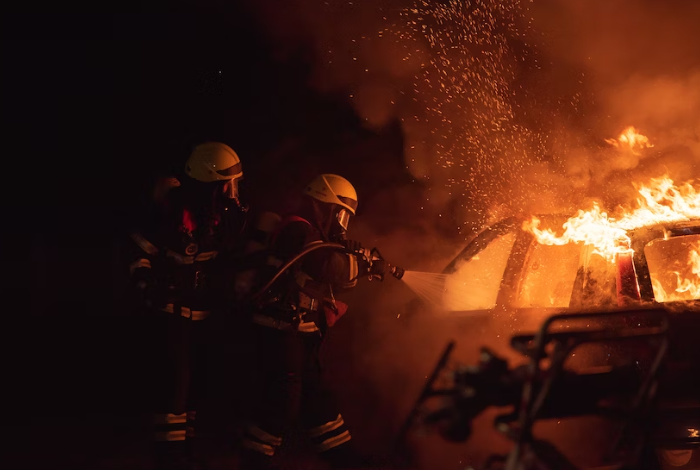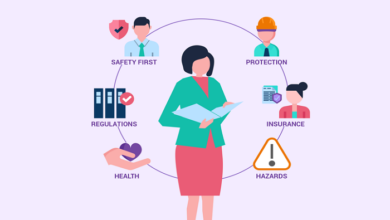Firefighting Hazards Beyond Airport Infernos and Smoky Buildings

Firefighting is not only courageous, but it is among the toughest jobs in the world. Firefighters face intense work pressures daily, including exhaustion, burnout, and health risks.
What health hazards do you normally associate with firefighters? The most common ones include the fire’s heat and the smoke’s impact on breathing. However, there is a third category of hazards associated with one of the firefighting tools – Class B firefighting foam to be precise.
Also known as Aqueous Film Forming Foam, AFFF consists of a group of manmade chemicals called Per- and Polyfluoroalkyl Substances (PFAS). PFAS, in turn, are made of two water-repellent, heat-resistant chemicals – Perfluorooctanesulfonic Acid (PFOS) and Perfluorooctanoic Acid (PFOA).
These chemicals spell bad news for human health and the environment. In this article, we will delve deeper into firefighting foam hazards, which go beyond airport infernos and smoky buildings.
Health and Environmental Concerns with ‘Forever Chemicals’
PFAS are also known as the forever chemicals as they are more or less like plastic. These chemicals do not break down in the environment. This means when released into the ground during firefighting missions, the area remains contaminated “forever.”
Currently, there are nearly 180 PFAS-contaminated Superfund sites, as identified by the Environment Protection Agency (EPA). Their cleanup will take a few decades, and with the Pentagon’s budget falling short, efforts will only be further delayed.
Besides the environment, PFAS do not break down within the human body. The only way to get rid of them is through excretion. The Agency for Toxic Substances and Disease Registry (ATSDR) lists different ways in which PFAS may be excreted from the body.
- Some PFAS pass out through urine. This may be difficult for people with kidney disease.
- In the case of women, PFAS also excrete through menstrual blood.
- Again, women may excrete PFAS through breast milk.
However, it may be impossible to get rid of PFAS entirely, and they do impact health in most cases. PFOA has been extensively studied and is considered to be carcinogenic by the International Agency for Cancer Research (IACR).
The ATSDR also provides a list of health conditions associated with PFAS exposure, including:
- Different types of cancer like those of the bladder and testicles
- Changes in liver enzymes
- Risk of pre-eclampsia in pregnant women
- High levels of cholesterol
There are several ways of exposure to these chemicals, including the soil, air, water, and food. A firefighter’s risk of cancer death is 14% higher compared to the general population. One major reason is the constant exposure to PFAS-containing firefighting foam.
Active Federal Lawsuits in Class-Action Multi-District Litigation
The health and environmental hazards of PFAS are so serious that there is an active Federal lawsuit against these chemicals’ manufacturers. According to TorHoerman Law, the lawsuit may be filed under two categories:
- Water contamination lawsuits filed by communities contaminated by the chemicals
- Personal injury lawsuits filed by firefighters suffering from physical and psychological damages
In June 2023, the first-ever Bellwether trial for the lawsuit was conducted. The chosen case (the City of Stuart vs. 3M Co. et al) was a water contamination lawsuit with health repercussions for the residents of the area. The trial was delayed as the parties were willing to arrive at a private settlement.
Shortly, it was revealed that 3M agreed to pay $10.3 billion for AFFF cleanup efforts, spread out over 13 years. This outcome also spelled good news for personal injury lawsuits, expected to be tackled in the second half of 2023. The latest AFFF lawsuit update is that there are over 5000 pending cases (both personal injury and water contamination lawsuits).
Settlements and the Upcoming AFFF Ban
It is believed that settlements for the AFFF lawsuits will be made on a tier-based system. The first tier of plaintiffs may receive anything between $200,000 and $500,000. The second tier of plaintiffs will be eligible for amounts between $150,000 and $300,000.
Will this happen in 2023? The first Bellwether trial’s settlement may create enough pressure for a global settlement amount. Then, individual lawsuits will also be settled gradually. However, there is no guarantee of that happening within this year.
On one hand, plaintiffs are hopeful but on the other, some fear they may never receive justice. An Alabama plaintiff recently died, and his case has now turned into a wrongful death lawsuit fought by his daughter. Fears persist that many others could share in his fate before their case settles in the Federal court.
As for AFFFs, countries across the world are banning their use by 2025. Different US states already have laws in place to strictly limit their use for extreme and urgent situations. The world is moving towards a new era of non-toxic firefighting foams but their fire-suppressing capabilities are still under scrutiny.
Even 3M has announced that it will stop the production of ‘forever chemicals’ by the end of 2025.
Final Thoughts
A recent study conducted among Florida firefighters found that a vast majority of their firefighting foam stock included AFFF. The scenario could be similar in other parts of the country as fire departments adjust to the new laws.
In any case, PFAS-containing firefighting foams will not be produced, sold, or distributed after 2025. Even the Department of Defense is required to replace all AFFFs by October 2024. With research introducing non-toxic suppressants for liquid fuel fires, firefighters should have one less health hazard to worry about.




